|
Grandma's Hay Fever Relief and
|
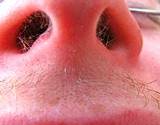 | 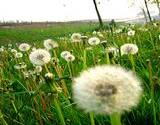 | 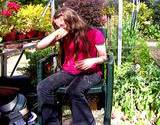 |
Many people are familiar with hay fever's irritating symptoms, but few know that it is actually an allergy to proteins in the pollen of trees, grasses, and some other plants (ragweed is among the most notorious offenders).
Pollen concentration in the air is highest during the blossoming allergy season for each type of plant. Normally, the immune system recognizes that pollen is harmless. But people who have hay fever have an extreme immune response to airborne pollens that come into contact with their nose and eyes. Their immune system forms too many antibodies, which attack the pollen as if it were a disease.
Hay Fever Symptoms Include:
- itching
- watery eyes
- stuffiness with heavy sneezing and a runny nose
- scratchy throat
- swelling of sinuses
- headaches
In addition, the connective tissue of the eyes can also become inflamed.
If the mucous membranes of the lungs are affected, the allergic reaction can trigger an asthma attack.
Fortunately, numerous naturopathic therapies are available that can relieve the misery of hay fever symptoms and help stabilize the immune system .
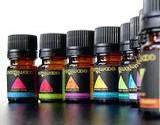 | 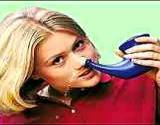 | 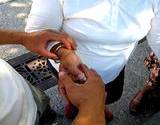 |
Natural Hay Fever Relief
Specialty shops sell devices that filter pollen from indoor air. There are also special anti-pollen filters for vacuum cleaners and cars. Plus, naturopathic methods, including acupuncture, can strengthen the immune system. In acute cases, algae preparations, acupressure and nose rinses can provide hay fever relief.
A Few Simple Steps towards Hay Fever Relief
You can take a few simple steps to reduce your contact with pollen allergy during peak times of seasonal allergies.
- Keep windows closed during the blossoming season.
- Keep the windows of your car closed while driving.
- Take a shower and wash your hair at night to remove the pollens that collected during the day.
- Mow your lawn before the grass flowers.
- Take walks just after a rainstorm, since rain washes pollen out of the air.
Help from Algae Preparations:
Powder or tablets containing the freshwater algae chlorella or spirulina stimulate the body's ability to produce interferon. Interferon is a protein that regulates the immune system.
Algae preparations should be taken for about three months, preferably before the pollen allergy season begins.
Tricking the Immune System:
Pollen preparations desensitization with oral medications containing pollen has proved successful. This treatment involved getting the body accustomed to the proteins that trigger hay fever. The preparations do not dissolve until they reach the small intestine, where they normally do not cause an allergic reaction. Through this contact with regulated amounts of pollen, the immune system "learns" that the pollen is not dangerous and thus develops a greater tolerance for it. The treatment must be carried out under supervision of a physician or a natural homeopathic physician every 1-2 months for a period of 3-4 years.
Essential Oils and Quick Hay Fever Relief
Essential oils can often bring relief to hay fever symptoms. Mix 1 drop each of cypress and hyssop essential oils in the palm of your hand. Apply the blend to the back of your tongue with your fingertip every few hours to ease irritating symptoms. The mixture has an unpleasant taste, but it will almost immediately help clear the head of congestion.
Acupressure for a Runny Nose
The Chinese technique of acupressure can be helpful. Stimulation of acupuncture point "intestine 4" can swiftly alleviate a runny nose. The point is located between the webbing of your thumb and index finger, close to the bone at the base of the index finger. Look for the highest part of the muscle bulge and massage it vigorously for 2-3 minutes. Work one hand and then the other, breathing slowly.
The Incredible Benefits of a Neti-Pot
It extremely important to clean your nose gently because excessive blowing will force pollen that has entered the nose even deeper into the mucous membranes, making the irritation worse. If your nose is sore from blowing try a calendula slave. Apply it daily in and around the nostrils.
In my home there is nothing like a Neti-Pot for Hay Fever Relief. It will flush the pollen out of your nose and high up in your nasal cavity. It's a bit tough to get use to but once you see the benefits of using a Neti-Pot during seasonal allergies, sinus infections and cold and flu season you'll quickly find the tiny bit of discomfort is well worth the effort. Just click on this link, Grandma's Home Remedy for Sinus Infection , you'll quickly learn how to use a Neti-Pot.
Pollen Allergy Seasons
Once you know the types of pollen to which you are allergic, you can use this pollen calendar to identify the time of year that is riskiest for you. The pollen count is typically high during February through September because these plants blossom and send their pollens into the air.
Pollen Season
- Alder - February through May
- Hazelnut - February through May
- Elm - February through May
- Birch - March through June
- Maple - March through June
- Oak - March through June
- Sorrel - April through September
- Stinging Nettle - April through September
- Beech - April through June
- Spruce - April through June
- Pine - April through September
- Horse Chestnut - April through August
- Various Grasses - April through September
- Asters - April through September
- Plantain - April through September
- Buttercup - May through July
- Goosefoot - June through September
- Mugwort - July through September
Confirm these approximate dates with your own observations, taking into consideration the typical plant life, elevation and other geographic features of your region. You can obtain current information based on the prevailing weather trends from county extension agencies, nurseries and horticulturists. Hay Fever relief isn't all that complicated once you gather all the facts together.
DISCLAIMER:
The statement's made here have not been approved by the Food and Drug Administration. These statements are not intended to diagnose, treat or cure or prevent any disease. This notice is required by the Federal Food, Drug and Cosmetic Act.
Return from Hay Fever Relief to Grandma's Ailments and Treatments Guide
Return to Grandma's Wisdom Home





